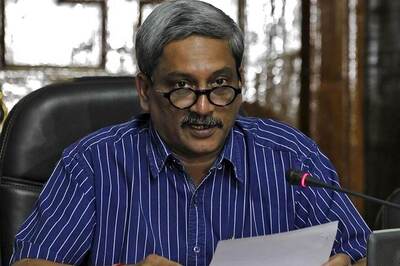
views
New Delhi: The pre-budget Economic Survey deduced that an average case in India waits for 7.9 years before a final judgment is pronounced by a court.
“The average age of cases waiting for final judgment is inordinately high at 7.9 years, showing that more attention needs to be given to cases pending at the stage of final disposal,” said the report prepared by Chief Economic Adviser (CEA) Arvind Subramanian and his team.
Citing the downsides of pending cases, the Economic Survey said, “Delays and pendency of economic cases are high and mounting in the Supreme Court, High Courts, Economic Tribunals, and Tax Department, which is taking a severe toll on the economy in terms of stalled projects, mounting legal costs, contested tax revenues, and reduced investment more broadly.”
According to the report, in comparison to 2012, there is now a 25 percent increase in the size of unresolved cases. The average age of pending cases across economic tribunals is 3.8 years.
Interestingly, in the case of telecommunications and electricity, the explosion in pendency resulted from interventions by the Supreme Court and High Courts.
Stating reasons for the delay, the report said, “Delays and pendency stem from the increase in the overall workload of the judiciary, in turn, due to expanding jurisdictions and the use of injunctions and stays; in the case of tax litigation, this stems from government persisting with litigation despite high rates of failure at every stage of the appellate process…”
The total backlog in High Courts by the end of 2017 as per the National Judicial Data Grid was close to 3.5 million cases.
“While the volume of economic cases is smaller than other case categories, their average duration of pendency is arguably the worst of most cases, nearly 4.3 years for 5 major High Courts. The average pendency of tax cases is particularly acute at nearly 6 years per case,” said the report.
The average pendency of civil suits at the Delhi High Court is 5.84 years, while that at the lower courts of Delhi is 3.66 years.
“There are currently one million writ petitions pending at the 6 High Courts studied, constituting between 50-60%,” revealed the report.
Among government ministries, the ministries of power, roads and railways have been the worst hit.
Analysing the costs associated with the judiciary, the report stated, “Total spending on the administration of justice by states and the Centre constitutes approximately 0.08- 0.09 percent of gross domestic product (GDP) which is low when compared to other countries, especially common law countries. Research shows that while general spending on the judiciary may not impact pendency, spending on modernisation, computerisation, and technology leads to shorter average trial lengths.”




















Comments
0 comment